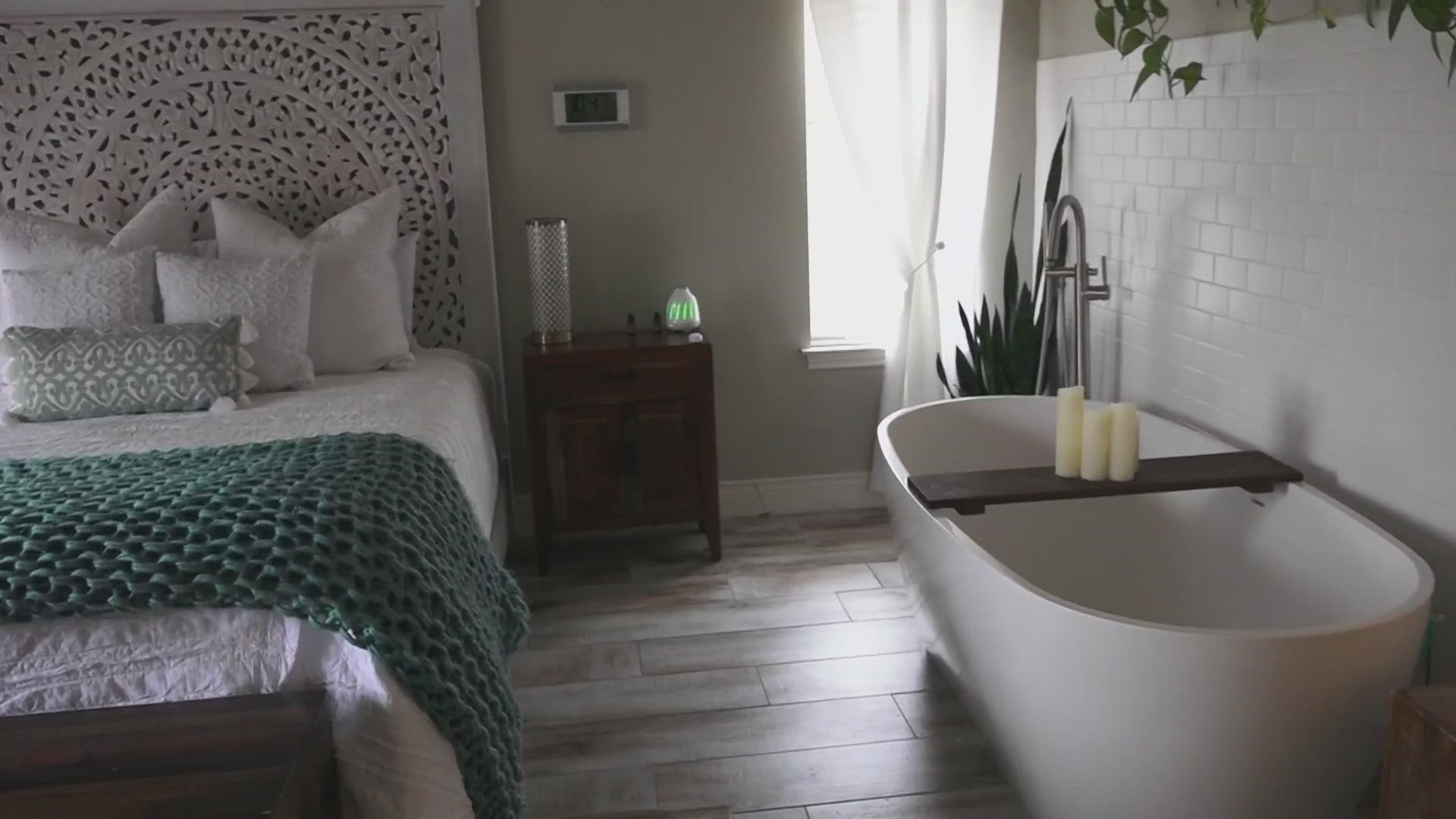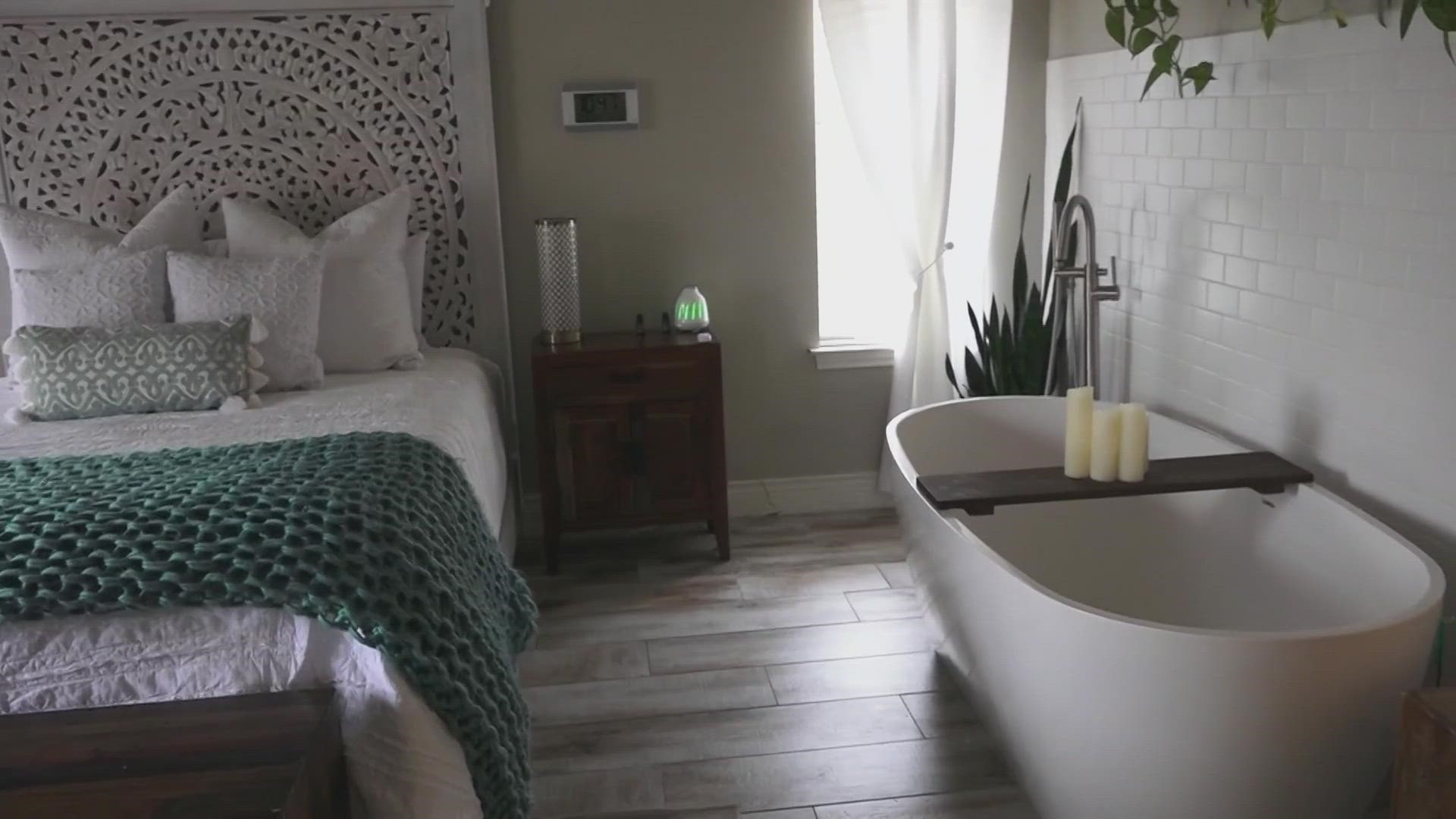'I'm one of 14 Black birthing centers in the U.S.' | San Antonio nurse giving women peace of mind as they give birth
A Black midwife opened up a birthing center that lets women bring life into the world as they wish --- a world where Black women may never see their baby turn one.

The maternal morbidity rate in the U.S. is higher than it should be for a wealthy country. Black women face the highest odds of dying due to childbirth complications, so a Black former labor and delivery nurse created a space for women to birth their babies and be listened to while doing so.
Chapter 1 The alarming maternal morbidity rate
The United States has one of the highest mortality rates for pregnant women, and women going through postpartum. As if that's not already alarming for a country considered 'rich' around the globe, minority women have an even less chance of seeing their baby's first birthday. That number drops even further for Black women.
Ten years ago, Black women in the United States were twice as likely to die during childbirth compared to white women and four times as likely to die during childbirth compared to Hispanic women.
Even 10 years later, those statistics haven’t gotten better.
The Center for Disease Control and Prevention says several factors contribute to the disparities such as underlying chronic conditions, structural racism and implicit bias.
Pregnancy can be a scary thing to think about for many women, but it can be even scarier for women of color who find themselves pregnant in a state that has one of the most restrictive abortion laws.
In August 2022, trigger laws went into effect that virtually banned all abortions after six weeks.
Related story: Texas nonprofits face further barriers, legal questions as trigger law banning abortions is set to take effect
With that being said, a local nurse and midwife has created an alternative that can offer peace to some as they bring new life into this world.
Chapter 2 San Antonio home to one of few Black-operated birthing centers in the country.
After working in the labor and delivery industry for 13 years, a woman who sees birth every day and experienced it herself decided to create a safe space for others.
Nikki McIver-Brown, a mother, wife and certified nurse midwife said she has experienced her fair share of incidents that made her want to create this alternative for women to be heard and cared for while giving birth.
Even being a Black nurse, doctor or celebrity doesn't bar you from experiencing prejudice or racism behind the white walls.
San Antonio Nurse Midwife Birth and Wellness Center is one of the few Black-owned birthing centers in the U.S., McIver-Brown said.
In a city with less than seven percent of Black residents, she took a leap of faith and opened the birthing center in Comal County, which offers a more comfortable space than a traditional hospital setting.
"I am one of 14 Black-owned birth centers in the United States of America," McIver-Brown said. "This is a location where people will come and have their babies outside of the hospital setting. We're set with emergency equipment. We're set up with just a really home-like environment for you to just come in and have your baby, be loved on and and go home."
Which is exactly what a now mother of two did just hours before this interview was shot, in fact she was walking out the door as I arrived.
Chapter 3 What is a birth center?
A birthing center is defined as a "place, facility, or institution where a woman is scheduled to give birth following a normal, uncomplicated pregnancy. A birthing center does not include a hospital or the residence of the woman giving birth," according to the Texas Health and Safety Code.
One thing McIver-Brown says that she notices when mothers come to have their babies in a birthing center, is the change in their demeanor.
"A lot of people will really just drop their guard down. When you have somebody that looks like you, you just drop your guard automatically."
At SANM, the healthcare professionals take pride in getting to know their patients on a deeper level. McIver-Brown believes that when you know more about a person, you take more interest in how their health and well-being are.
"With the midwifery model of care, we get to know our clients really well," McIver-Brown said. She went on to say they know about the partners of the new mothers, their kids and their kids' names.
Midwives also work to educate the community and are trying to make birth seem less scary.
"As midwives we love to take the stigma out of labor and birth being a scary and frightful thing. It's a normal, natural process and it can have some urgent situations that go along, but that's why you have trained professionals with you."
Chapter 4 What happens in the birth center?
When a new mom is interested in being under the care of SANM, there is a process that has to be carried out in order to make sure of the best possible outcome.
"We take care of women that are low-risk and safe for birthing outside of a hospital setting," McIver-Brown said. When women express interest in having their births at the birthing center, they are asked to fill out a questionnaire that goes over their pre-existing health concerns.
Given that the mothers are healthy and have no pre-existing comorbidities, they will begin the meet the midwife process and have regularly scheduled appointments as one would in a regular hospital setting.
Inside of the birthing center is a lounge, a kitchen, the birthing suites which are set up like bedrooms and the exam room. There is also a playground in the back and a small cottage in the front of the property that doubles as an Air BnB, McIver-Brown said.
Health is anticipated at this facility.
"I just love the peace and the energy that's here. I worked as a labor and delivery nurse for 13 years before I became a certified nurse/midwife over 10 years ago. I'm not saying there's anything wrong with that environment at all but it is a hospital. It's where people go when they're sick." McIver-Brown said. "Here, we anticipate health and you come in with the understanding that you're healthy and pregnancy and birth is healthy.
McIver-Brown said she also really enjoys doing what the clients want her to do, meaning the different physical positions of bringing life into this world. She mentions that while a hospital's protocols may not be tailored toward individual clients, at the birthing center, they are. "We just do exactly what the momma wants during labor and birth. It just makes them where they're satisfied about their labor and birth experience which is cool," she added.
McIver-Brown said, "For some of them it's a little bit shocking and a little bit surprising how free they are to do what they want to do," McIver-Brown said.
She adds, "We're here to make sure you guys are safe. Whatever position you need to be in... go. If you want to be in water, fine. We encourage you to eat and drink and be ambulatory, McIver-Brown said. "So it's a very different environment yet it's very very safe."
She said she even had her own baby outside of the hospital because she felt it was what was safest for her.
Chapter 5 What else?
For those who are experiencing financial stress, McIver-Brown has a birth fund in which she has helped 26 different families give birth outside of a hospital.
She will have a fundraiser taking place on Feb. 25, and those who are wanting to donate to the birth fund can do so here.
And as always, be your own voice.
"I feel that advocating for yourself is very important and it's really hard to do when you're uncomfortable. I feel it's very important to inform yourself of your options and choices, and talk to your provider about those things prior coming into your birth space." she said.
To connect with the midwife, you can click here.


